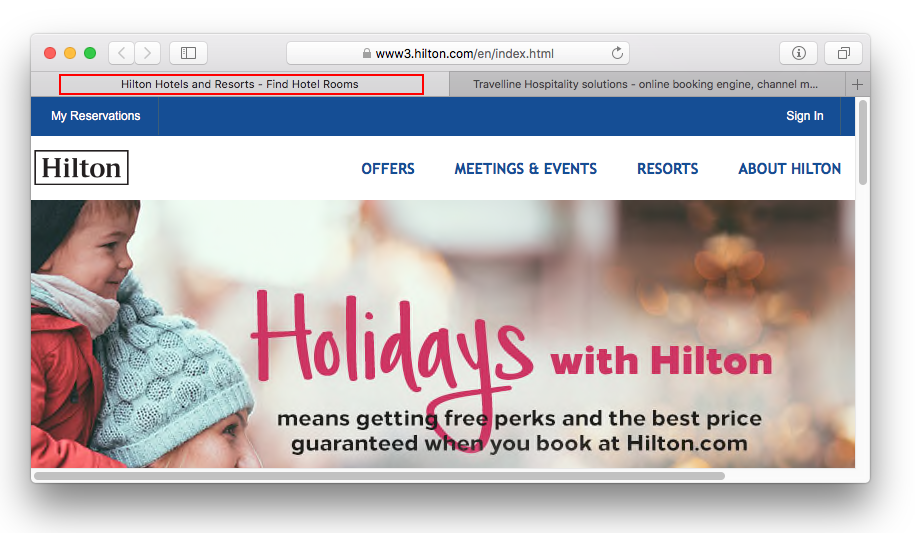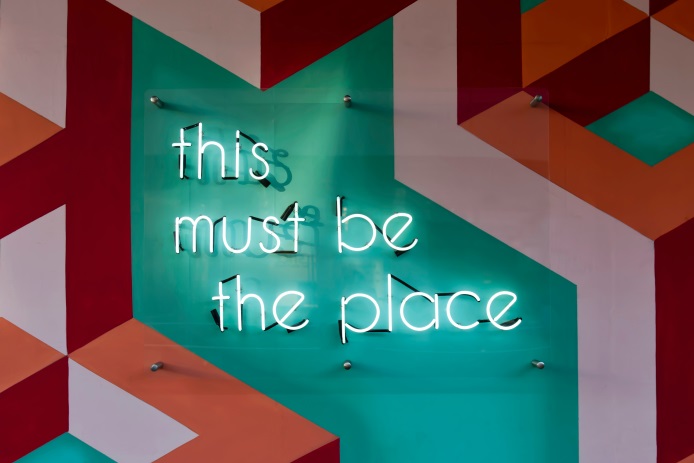SEO, or search engine optimization, is vital for promoting your website. It helps search engines index your website properly and list it high in the search results when people look for a room on the Internet, especially if they have specific demands. SEO will help your guests understand your hotel is the place. :)
In this article, we’ll tell you more about SEO, web page structure, and navigation. The information here works not only for hotels but for any business.
Read on the TL blog how to improve your website with content and design.
Optimize meta fields
When you search for something on the web, most likely you choose one of the first five results that seem to answer your question. Most people never get as far as the second page of the search results.

The higher your website’s position, the more visitors will get there by a simple search. There are few important SEO rules to follow that will significantly improve your website’s ranking and position in the feed. Here they are.
Meta title
An HTML title meta tag is a search optimization tag that will be displayed in the search result feed when a user types in a text (e.g., in Google) with matching keywords. Every page on your website may have a unique meta title, but it’s a good strategy to have the same part in all page titles.
Here is a search result (aka snippet) example for the keyword “hilton hotels”:

The recommended meta title length is fr om 60 to 70 characters, depending on the screen size. Longer titles will be cut off automatically with an ellipsis (...).
When the page is opened, the meta title text will be displayed on the tab’s header inside the web browser.

In the previous years before tabs became popular, the title used to appear at the top of the main browser window. Now, every browser in every OS generally uses tabs for opening different web pages. When many tabs are opened, users can only see the first words of the title, which makes the opening phrase of the title more noticeable.
How to write a great meta title:
- Include the hotel name (or name of your business)
- Write a neutral, concise, and descriptive title
- The title should clearly reflect the page contents (relevance)
- Include up to three
high-frequency keywords
(e.g., rooms, apartments) - Capitalize words to make your message more visible, but don’t use all caps
— How do I include all the keywords if the meta title length is limited?
— Create separate landing pages for each possible task with specific keywords. Find a keyword phrase that reflects each task the best (for this, you need to do some research and experimentation). It might be rare and long, but still be exactly what your target audience is searching for, and thus extremely effective as a keyword.
Creating landing pages is a common marketing strategy that covers all possible search inputs and increases organic traffic that comes fr om Google searches. But that’s a topic for another article, so let’s get back to page optimization.
How meta titles affect booking engine conversions on hotel websites
Case #1Problem: A seaside health retreat with 265 rooms lost its top position in the Google search results and had a wrong link to the website listed in a local online business catalog.
Solution: 1. We changed the meta title and text link in the website footer. 2. We contacted the business catalog to have the right link listed.
Result: The booking engine conversion rate increased fr om 1.5% to 3.8%, which means that the number of website visitors who became guests increased almost 2.5-fold.
Case #2Problem: A park hotel with 316 rooms just outside a big сity lost its top position in a local search engine.
Solution: We changed the meta title and text link in the website footer.
Result: The booking engine conversion rate increased from 3% to 5%.
Meta description
A meta description HTML tag is displayed under the title in the search results. Similar to a short article synopsis in a magazine’s table of contents, it’s used to summarize the contents of the web page. Words in the description that match the user’s search request are highlighted in bold.

The description should encourage users to visit your website. Use appropriate keywords in page descriptions. The bold words in the description attract users’ attention and increase CTR.
The description affects the page ranking, how many users open it (CTR or click-through rate), and the website’s view time. You can enter the description manually, but Google will generate it automatically if it’s not accurate (i.e., relevant) enough.
The meta-description text length may vary from 120 to 158 characters, depending on the screen size. This number includes spaces and punctuation. If the description exceeds 158 characters, extra words will be omitted with an ellipsis (...). Less than 120 won’t work either, because Google has a standardized feed.
How to write a great meta description:
- Clearly describe what’s on the page, especially in the first few paragraphs.
- Include keywords or entire key phrases. Some of the keywords may duplicate those that you used in the meta title.
- Include a call to action (CTA). For example, “Book a room now!”
- Include a unique selling proposition (USP) to stand out from the competitors’ results. For example, 20% off on all 2-room suites!
Historical note: Meta descriptions used to be strictly defined by webmasters, but this isn’t the case anymore, because most of the time Google generates its own description based on the text of the web page. However, we recommend that you fill it in just in case.
Rich snippet
A default snippet in search results contains meta title, description, and URL. A rich snippet may include additional information, such as ratings (1-5 stars), reviews, price ranges, work hours, address, etc.

For example, TripAdvisor’s rich snippet shows either products and prices or reviews and ratings depending on the user’s search request. Decide what’s most important for your business and apply it.
Rich snippets stand out from regular snippets, which gives you a strategic advantage. Users feel more confident, even with these tiny bits of information, and they are more likely to click on a snippet with ratings and reviews.
To create a rich snippet, conform the page’s HTML code to the structured data format (PageMap). It will provide Google with explicit information about the custom data fields on the page, such as reviews. Learn more at the Google Developer’s website.
Optimize pages
Google analyzes not only meta tags, but all web page contents when indexing your website. Optimizing texts and headers is as important as creating a good snippet.
Header one, two, three, go
The main header (H1) is a large text that you see at the top when you open a web page. Although headers are not displayed in search snippets, it’s a good thing to include keywords and the hotel name in H1.
Don’t confuse the search optimization meta title tag with the header HTML tag, which is a part of the page’s body. While a meta title should provide an incentive to click on the snippet, a header should carry the main message to the people who make it to your web page.
Next, divide the text into sections, and add second level headers (H2) and subheaders (H3) if needed. We don’t recommend going deeper than H3.
Clear structure
Google gives preference to well-structured pages with separate sections and distinctive headers over just plain text.
Not only Google, but real people prefer to read well-structured text too. While skimming through the headers, they should get a basic idea of what each part of the page contains. Most of the time, visitors don’t have time to read the entire text, but a clear structure helps them quickly find the info they need.
The structure is determined by HTML body tags. Dedicate additional time to the markup: all HTML tags should be properly used, such as H1, H2, paragraph, links, etc. Make sure all the tags are closed. Some structural problems may not be visually noticeable, but will affect the page’s ranking.
A clear structure improves the key metrics. It increases the average time spent on the website, reduces the bounce rate by engaging visitors and increasing the number of click-throughs to other pages on the site. This will prove to search engines that your site is useful, so they will reward your hard work by showing it higher up in the search results.
What Google doesn’t pay attention to is CSS (visual and styles on your website), so you can use it to make text larger or smaller, or even mimic header visual styles when needed.
Links
A hyperlink is an essential part of the World Wide Web. Every website has links, but a business website should use links wisely. There are two main link types: internal and external.
Internal links lead to other pages on your website (e.g., a menu link from the main hotel page to the page with rooms and prices). Page interconnectivity is a good thing to have; it simplifies navigation and improves user engagement with your site. Search engines tend to rank multi-page websites better than multi-purpose single-page websites. Make sure that all the internal links on your website work correctly and lead to existing pages.
External links lead from your website to other websites (e.g., Wikipedia to define a term) or from other websites to yours. Google checks if the linked websites are connected in some way and checks their reliability. You can make connections with relevant third-party resources (e.g., travel bloggers and websites) to post links to your website on their pages. This will give you additional relevant traffic.
Besides links that navigate to new pages, there are also anchor links that take you to a subsection of a web page. Usually, anchors are linked to headings. A Wikipedia page with an interactive table of contents is a good example of how anchor links work.
Navigation
Website navigation helps visitors browse different pages on your website, find the required information, complete purchases, etc. Inconsistent navigation leads to frustration and impacts the negative bounce rate metric.
Clear navigation implies an understandable main menu, which generally shouldn’t include more than seven items. Pages should be linked to each other, and users should understand wh ere they are at every moment.

Dead links break navigation, so make sure that there aren’t any.
Websites’ visual design and usability trends have changed over the last 10 years, but navigation principles have remained unchanged for even longer. For more info, check out Designing Effective Web Navigation by Glen Doss.
An internal website search function will help users find what they’re looking for without leaving your website. Add a custom search field to your website.
Booking engine
A hotel website should let users not only see the rooms and information, but also book a room without ever leaving the website. Use an online booking system for your website like the TravelLine booking engine and make sure it’s easily reachable from any page.
Content
The content on the site should be readable, relevant and useful. Use only confirmed information and actual prices. Check text for grammatical errors.
Learn more about content on a hotel website.
Alt text for images and titles for links
Users can also search for images of hotels and rooms. Adding image descriptions will help Google index your pictures. Add an alt text to the image’s tag. In the early years of the Internet, text alternatives showed up when users disabled automatic picture downloading in their browser to save traffic, but with today’s high connection speeds, it’s become more of an SEO tag.
A link title will appear in a tiny tooltip when you hover the mouse cursor over a link. For example, you can inform a user that this link takes them to the price list, or leads to another website.
Don’t over-optimize
The main SEO trend in 2018 is not using too many keywords in meta descriptions and page bodies to the degree that it’s hard for humans to read and understand. Google penalizes over-optimization by significantly lowering the ranking of the entire website.
If the meta description is not clear and people leave the website without having their questions answered, it also lowers the ranking. The “bounce rate” shows the percent of visitors who weren’t interested in your website, didn’t click on any links, and just closed the tab.
The Google search engine is constantly being developed (achieving consciousness, if you will) and now negatively reacts to the sneaky optimization trends that were used before.
Useful SEO tools
There are plenty of optimization tools and services that you can use while working on your marketing strategy. There are many paid tools, but here are a few free tools that are essential for good SEO: Google Analytics will help you determine what search requests lead to your website.
Find the keywords that match your business with Google Keyword Planner. Experiment and don’t lim it yourself to high-frequency keywords wh ere the competition is extreme. Some less frequent keywords may improve your ranking.
Preview how your page will look in the search results with Google SERP Snippet optimization tool.
Investing in your hotel’s website is always a good idea. This will help you sell more rooms directly and win more lucrative deals. You can play around with the proportion of rooms you sell via OTAs and your website and see which brings you more money. Your guests will be able to book a room right on your website, and you will save some money on OTA fees.



